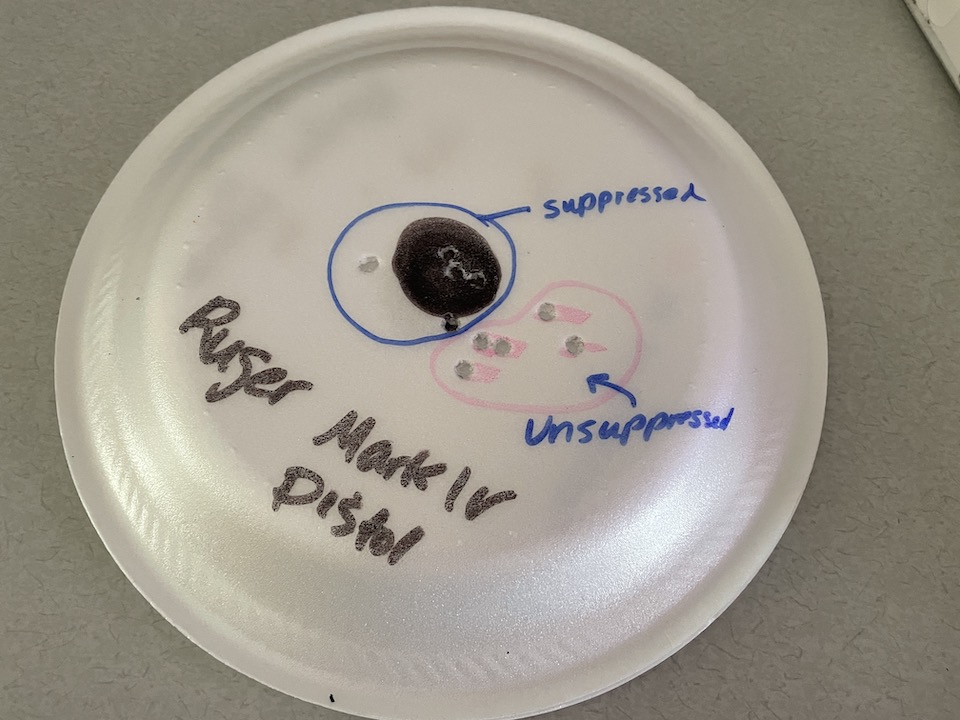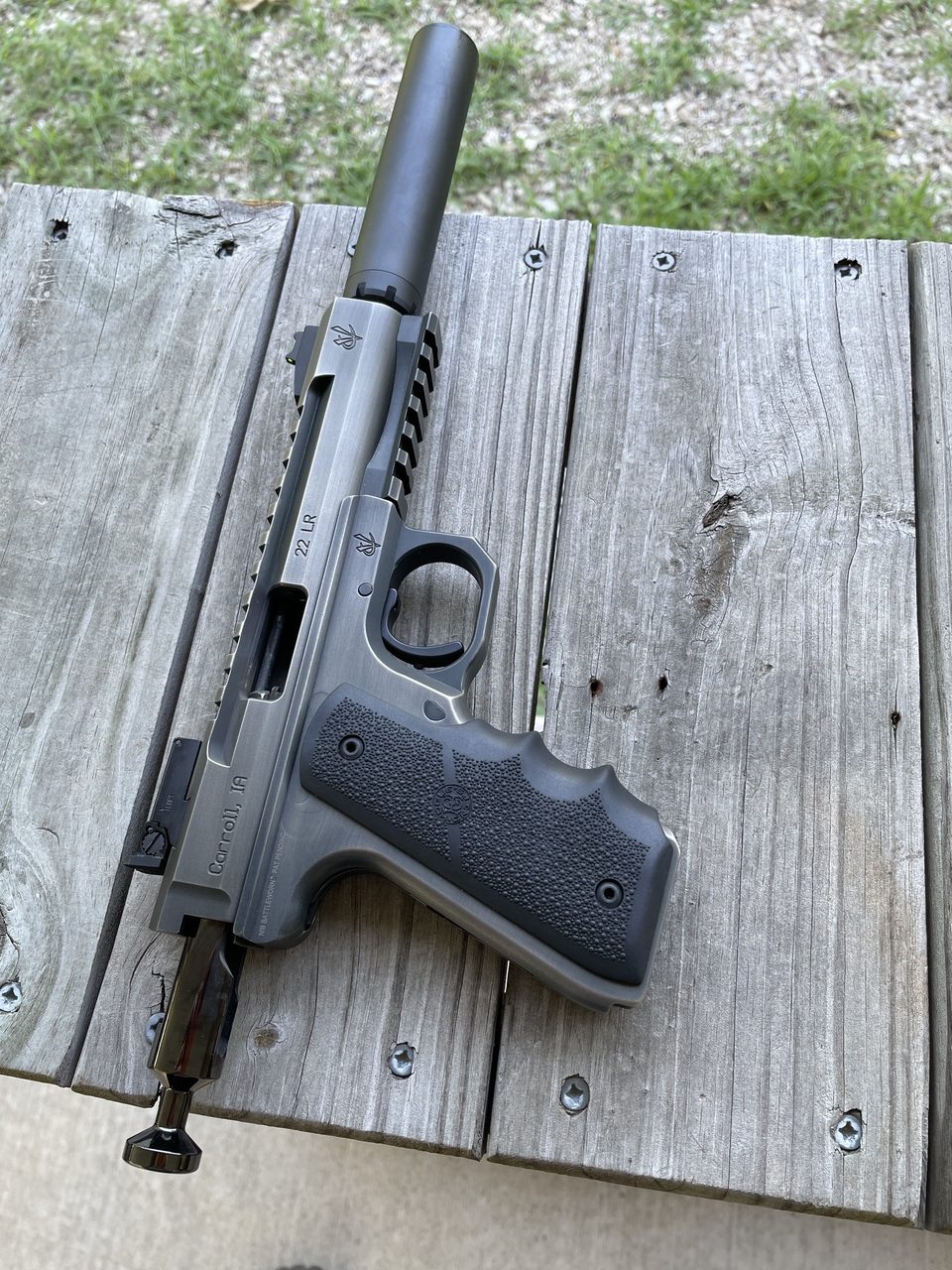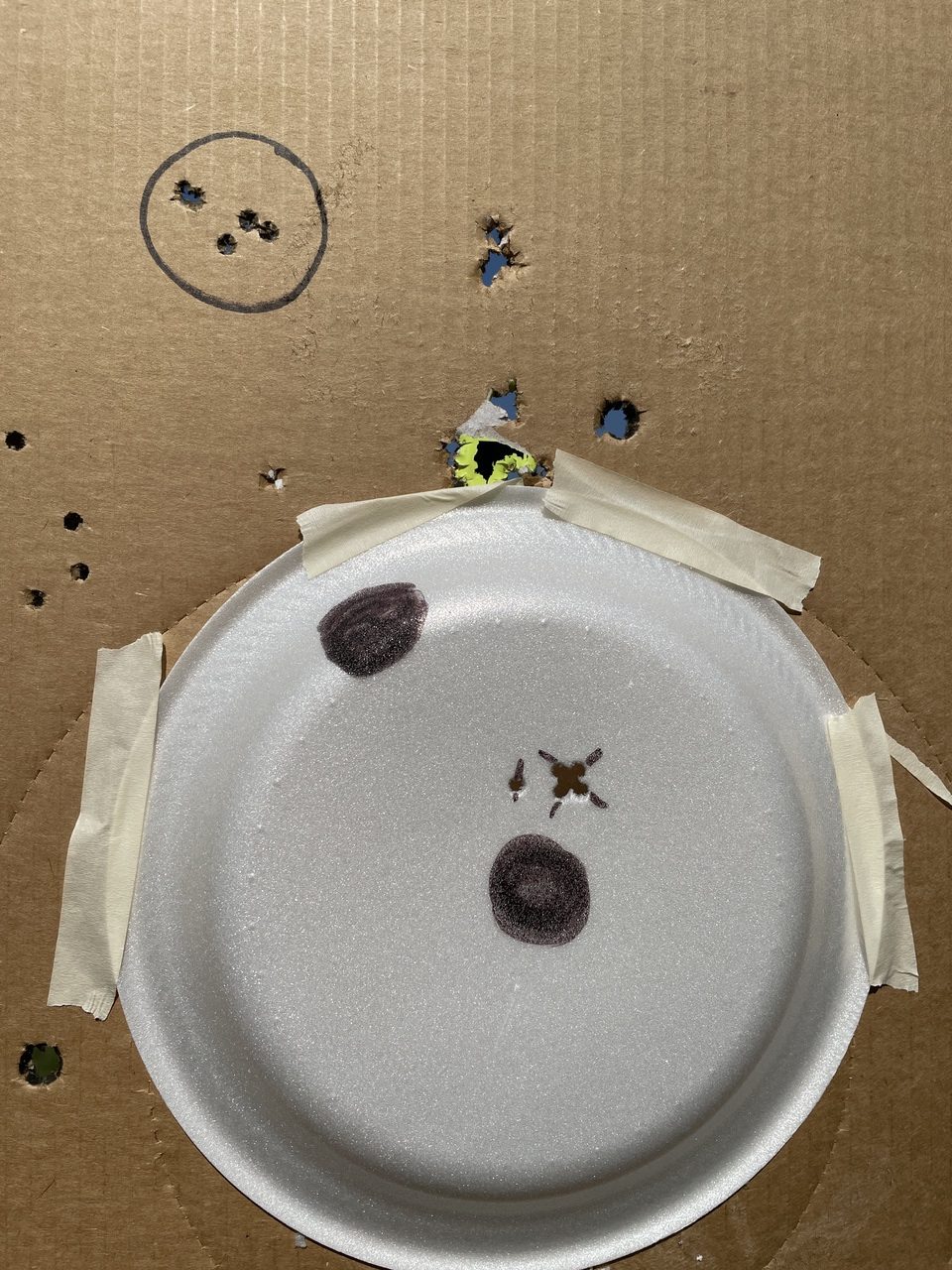It’s tempting to cut corners and head out to shoot or hunt after attaching a suppressor without checking for any changes in the point of impact, aka POI. “What can possibly go wrong?” you may ask. Isn’t the hole at the end of the suppressor lined up exactly with the hole on the end of the muzzle? Not so fast, here. Please remember it’s important that if you attach a suppressor to a gun, you must check the new POI that results so you can make changes to your POA (point of aim) so they coincide.
Sponsored by SilencerCo
In this prior post, Brooklee Grant walked us through reasons to care about what’s happening down there at the end of the gun. She says to pay strict attention to the POI shift, especially if it’s six inches or more between your old POA and POI.
To further prove Brooklee’s points, we took three guns – a Ruger Mark IV, a Volquartsen Scorpion and a Ruger American Rimfire Compact Rifle – to the range and shot all three guns suppressed and unsuppressed at the small bore competition-distance of 50 feet from a benchrest. We used the iron sights that came mounted on each gun to shoot the groups. SilencerCo sent me the Sparrow 22 to use for this demonstration. This suppressor is small and weighs only 6.5 ounces, so one wouldn’t think it would cause a POI shift. Made of stainless steel, it measures 5.08 inches long and comes at the ready to equip guns chambered in 22LR, 7WSM, 17HMR, 22MAG, 22WMR, 22 Hornet and 5.7 x 28mm calibers.

Our testing involved shooting five rounds at a dot on a paper plate, first without the suppressor, and then with the suppressor.
We used the same ammo in all the guns.
Here’s what happened. When shooting this type of test, I recommend that you fire a few rounds downrange without the suppressor on the gun to make sure you can shoot a group on the target – it makes no sense to start shooting this test if you don’t know where your shots are falling.

First, I have to say because of its weight, grip angle, trigger, inherent accuracy and price point, this handgun is a great first target pistol and a good pistol for beginners, including youth. After shooting a group unsuppressed, we unscrewed the barrel thread protector and attached the Sparrow. The Mark IV actually grouped shots better with the Sparrow 22 attached than without it. Nevertheless, the unsuppressed and suppressed shots all fell within a few inches of each other, and not more than 2-3/4 inches apart, in about 1-3/4-inch groups.


This is a step up in the target pistol world; the Volquartsen Scorpion bills itself as “the ultimate lightweight pistol,” its frame is CNC-machined from aluminum alloy. The Scorpion line includes an extended bolt release, a CNC-machined trigger with a crisp 2.25-pound pull, a CNC-machined disconnector and an extended safety. You may choose from several finishes, including the American flag, OD green and Battle Worn. I went with the “Battle Worn” version.

The Scorpion’s results showed very little difference between the unsuppressed and suppressed groups.

In this post, a guest who once served as s Royal Air Force Station rifle team commander, and who happens to be my husband, broke down the importance of using a rimfire rifle to teach shooting skills to new folks, including youth.

You can clearly see why you would spend the time checking for POI shift when suppressing a rifle – whether intended for target purposes or hunting – after seeing the results of this test.
The suppressed group is actually completely off the target and on the target backer. It’s still a decent group, but it’s high and to the left. If you took this gun and installed a suppressor on it, say for squirrel hunting, without checking for POI shift and making a corresponding POA adjustment you’d be knocking down leaves instead of squirrels.
A gun barrel vibrates when a shooter fires the gun, and given the same caliber and barrel outer diameter, the longer the unsupported part of the barrel, the more the muzzle end vibrates. That’s kind of intuitive, isn’t it? The tip of a longer fishing rod whips more than the tip of a shorter rod of the same material and diameter when you shake it. We say the shorter rod is stiffer. Imagine hanging a weight at the end of each rod; the weighted rod tip of the longer rod will whip even more than it did before you hung the weight on it, and even though the weighted rod tip of the short rod whips more than the unweighted tip, it still whips less than the weighted long rod tip.
The same goes for longer versus shorter gun barrels. Hanging a weight (a suppressor) at the muzzle end of a barrel tends to make the vibration amplitude of a long barrel greater than of a short barrel. Voila! More POI change for a longer than a shorter barrel.

I’ve been shooting another SilencerCo Sparrow 22 for a few years now, and used it on so many guns and with so many new shooters. It hasn’t failed us at all. No wonder it is one of the best sellers on the silencer market, and it’s easy to find hundreds of 5-star ratings for it. It ships with a Delta 1/2×28-threaded rifle spacer.
Publisher/Editor Barbara Baird is a freelance writer in hunting, shooting and outdoor markets. Her bylines are found at several top hunting and shooting publications. She also is a travel writer, and you can follow her at https://www.ozarkian.com. View all posts by Barbara Baird